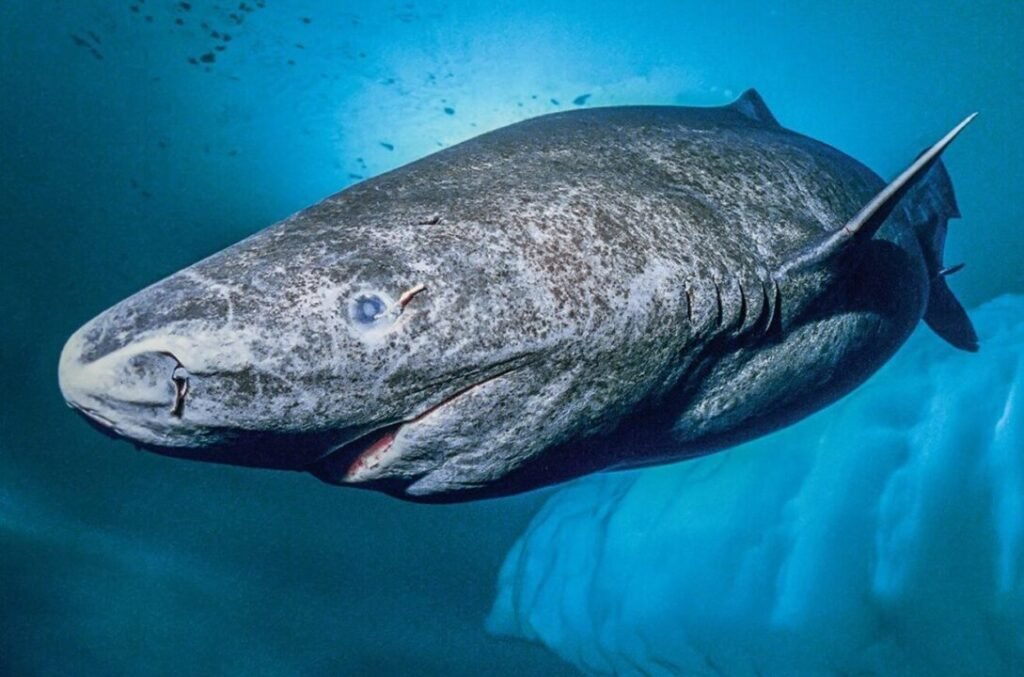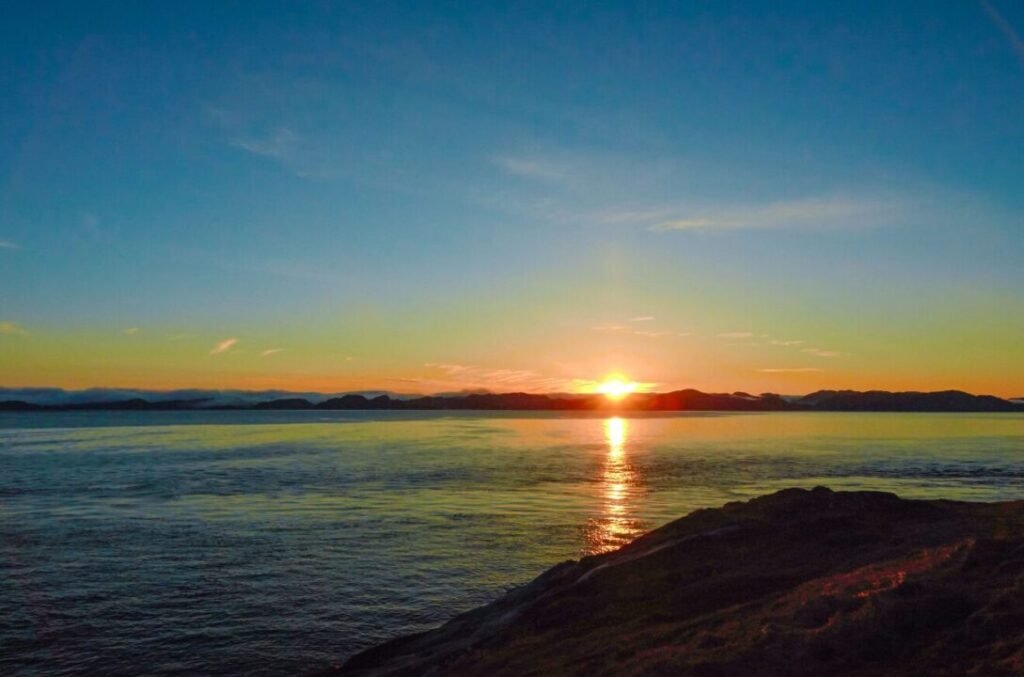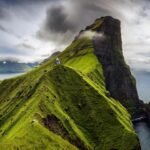You’ve likely seen Greenland, the world’s largest island, on a map and thought it was just another cold, remote place.
But, what if you’re underestimating this frozen paradise?
For starters, it’s considerably larger than it appears on most maps due to projection distortions. Imagine, a place where the capital city, Nuuk, marries traditional Inuit and Scandinavian architecture.
Where a complex language thrives, rich in history and cultural significance. Intrigued? Stick around as we uncover 10 lesser-known facts about Greenland that may just change your perspective.
Greenland’s Unexpected Size
You might be surprised to learn that Greenland, often underrepresented on world maps, is actually the world’s largest island, covering an impressive 2.16 million square kilometers.
This geographical misconception is largely due to the Mercator projection, a map style that skews size perception near the poles.

Here, countries like Greenland seem smaller than they are.
When you compare Greenland to Africa on most maps, it’s dwarfed.Yet, in reality, Africa is about 14 times larger!
It’s a prime example of how maps can distort our understanding of world geography.
Greenlandic Language Complexity
Exploring the complexities of the Greenlandic language, an Eskimo-Aleut tongue with a rich tapestry of dialects, can be a challenging but rewarding intellectual adventure.
You’ll notice the linguistic evolution at play as you investigate its polysynthetic structure, where words are built from many parts and can be long and descriptive.
This unique feature contributes to its complexity, making it a treasure trove for linguists.
Despite modern influences and shifts in use, efforts towards language preservation remain strong, with Greenlandic as the official language of Greenland.
It’s used in schools, media, and official documents, ensuring its survival and continued relevance.
The Inuit Hunting Traditions
Immersed in rich heritage, Greenland’s Inuit communities continue to uphold their ancestral hunting traditions, offering a fascinating glimpse into their enduring connection with the harsh Arctic environment.
These traditions are deeply interwoven with Inuit fishing techniques, where they skillfully use spears and harpoons for catching seals and fish.

Shamanistic practices also play an integral role in their hunting culture.
Before setting out on a hunt, rituals are performed to guarantee a successful trip, showing respect to the spirits of the animals. Despite modern influences, you’ll find that these traditions aren’t just about survival, but also about maintaining a spiritual link with their ancestors and the Arctic wilderness.
It’s a compelling blend of pragmatism and spirituality that tells a unique story of resilience and adaptation.
Greenland’s Unique Wildlife
Venturing into Greenland’s rugged landscapes, you’ll encounter a wealth of unique wildlife that has deftly adapted to the Arctic’s harsh conditions.
Polar bears, for instance, are a sight to behold. Their habits, such as hunting seals on sea ice, are remarkable displays of predator-prey dynamics in this frosty wilderness. You’ll be fascinated by their ability to survive in such extreme environments.
Another must-see creature is the Arctic fox. Their adaptations are nothing short of awe-inspiring. They change their fur color from brown in summer to white in winter for camouflage, and their compact bodies minimize heat loss.
It’s a living demonstration of nature’s ingenuity in the face of adversity. Witness these stunning animals on your Greenland adventure.
The Greenland Shark Mystery
Delving into Greenland’s past, you’ll uncover a rich tapestry of Viking history that’s as fascinating as it’s complex.
Shifting our focus from the hidden resources beneath Greenland’s surface, let’s unravel the mystery surrounding the enigmatic Greenland shark, a creature that’s as intriguing as the land itself.
This shark’s longevity is astounding; they’re known to live for hundreds of years, some even reaching 400!

It’s a living witness to centuries of change. But what supports such a long life?
Their unusual diet might hold some clues.
You’d be surprised to know that these sharks have been found with everything from polar bear remains to reindeer in their stomachs!
They’re not picky eaters and this diverse diet could be a secret to their extended lifespan.
Intriguing Viking History
The island was a significant location for Viking settlements, creating a unique cultural blend that’s still evident today.
As you explore, you’ll discover remnants of Norse mythology, woven into the fabric of Greenland’s identity.
Tales of mythical creatures and heroic sagas are etched into the landscape, whispering of a time when Vikings ruled these lands.
From the well-preserved ruins of Hvalsey Church to the UNESCO-listed site of Brattahlid, each relic tells a compelling story.
So, as you journey through Greenland, you’re not just traversing a land of ice and snow, you’re stepping into a fascinating world where Viking history comes alive.
The Midnight Sun Phenomenon
Imagine experiencing a day that never ends – that’s the magic of the Midnight Sun, a stunning natural phenomenon unique to the Arctic regions like Greenland, where the sun doesn’t set for several weeks during summer.
This spectacle transforms the land into a domain of endless daylight, providing ample time for solar observations.

You’ll see a sky ablaze with fiery hues, casting a surreal glow over the icy landscape. This not only captivates scientists, but also stirs the curiosity of tourists.
In fact, this intriguing occurrence has given birth to a thriving polar tourism industry.
Tourists flock to Greenland to witness the Midnight Sun, immersing themselves in the Arctic’s mesmerizing twilight and gaining a unique perspective on the rhythms of nature.
Glacial Impact on Global Sea Level
While you’re marveling at the endless daylight, it’s worth noting that Greenland’s massive glaciers play a vital role in global sea levels.
These glaciers are melting at an increasing rate. This rapid melting, referred to as glacial retreat, is a significant factor in the rise in global sea levels.
Recent studies show that if all of Greenland’s ice were to melt, sea levels worldwide could rise by as much as 20 feet. This could have devastating impacts on coastal cities and ecosystems.
The melting rates are influenced by both air and ocean temperatures, which are steadily increasing due to climate change.
Greenland’s Underground Resources
Beneath the icy surface of Greenland, you’ll find a treasure trove of valuable underground resources such as minerals and fossil fuels, waiting to be tapped into.
The mineral wealth of Greenland is immense; it’s packed with precious metals like gold, zinc, lead, and prized rare earth elements. These elements are key components in modern technology, from smartphones to electric vehicles.
But that’s not all.
Have you heard about Greenland’s geothermal potential?
This icy country sits on a hotspot of geothermal energy. Heated by the earth’s core, these underground heat sources could provide a sustainable and renewable energy solution, reducing dependence on fossil fuels.
So you see, Greenland’s icy exterior hides a wealth of resources beneath its surface.
The Ice-Free Nuuk Capital
Despite its chilling reputation, Greenland’s capital, Nuuk, is surprisingly ice-free for a significant part of the year, offering a unique blend of Arctic landscapes and modern city life.

As you stroll along the harbor, you’ll find Nuuk architecture merging traditional Inuit design with Scandinavian influences, creating a distinctive urban aesthetic.
When the ice melts, the city bursts into life with cultural festivals that celebrate Greenlandic heritage. You can immerse yourself in the vibrant Nuuk Nordic Culture Festival, or marvel at the dramatic displays during the annual National Kayaking Championships, showcasing the country’s seafaring roots.
Nuuk, with its cosmopolitan charm set amidst Arctic wilderness, is a reflection of Greenland’s adaptability and resilience.
It’s a city that embodies its icy past while embracing the warmth of its present.
In Closing
So, you’ve explored Greenland’s vast scale and marveled at Nuuk’s unique architecture.
You’ve also explored the complex Greenlandic language and experienced the rich Inuit hunting traditions.
You’ve encountered diverse wildlife, witnessed the midnight sun, and understood the glacial impact on global sea levels.
Not forgetting the untapped underground resources and the mysterious Greenland shark.
Now you see, Greenland’s not just another dot on the map, it’s a whole new world waiting to be discovered.

